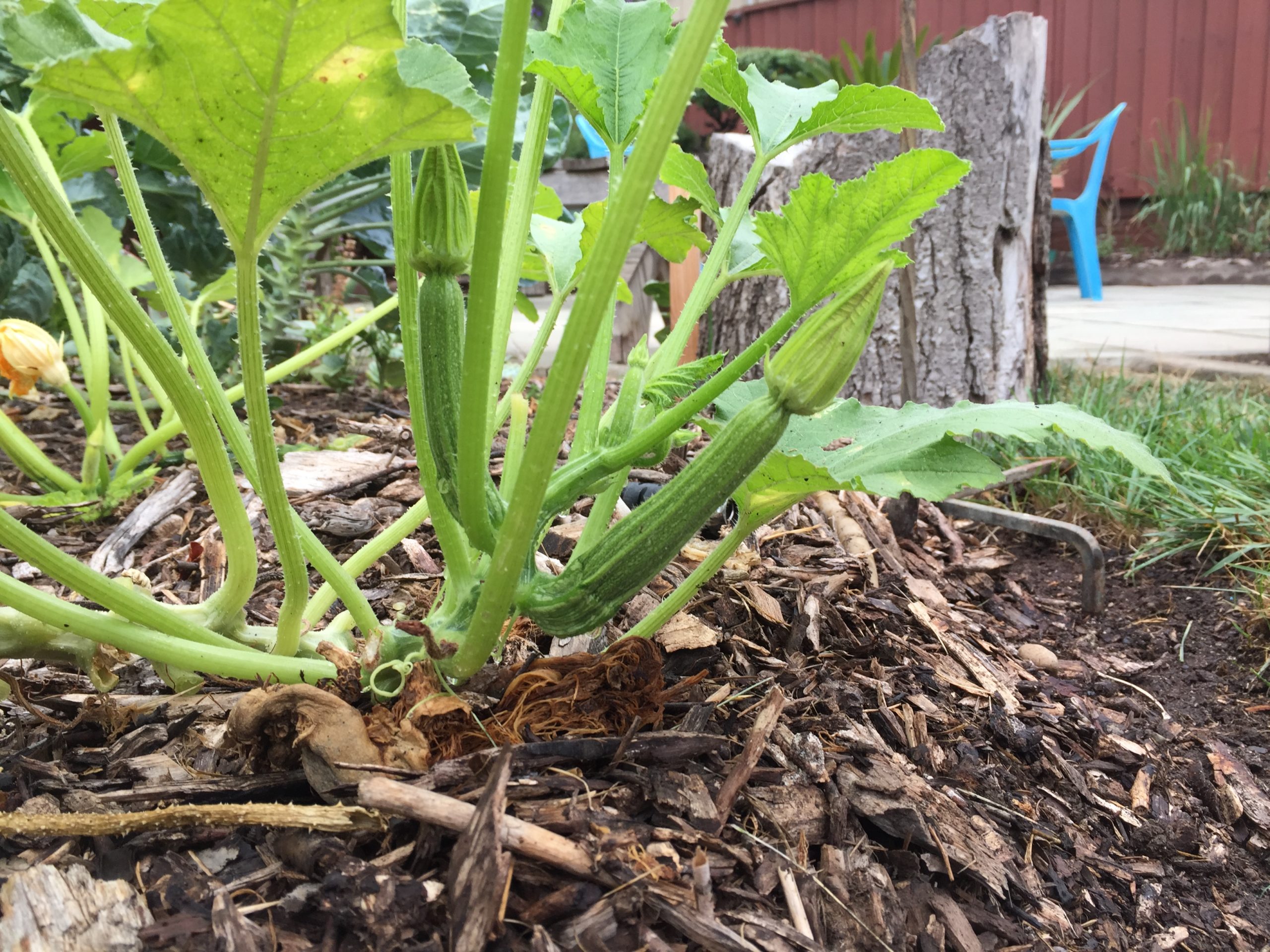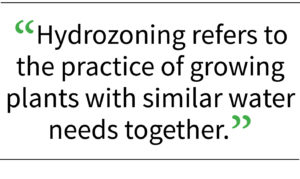Grouping plants with similar water needs makes your job as a gardener easier.
![]()

Zucchini grows well next to a fruit tree. Grouping plants with similar water needs makes your job as a gardener easier.
Photo courtesy Kate Russell
By Kate Russell

Kate Russell
 Some plants, such as lettuce and broccoli, need a lot of water, especially in Morgan Hill’s scorching summers. Succulents and herbs need only a little water. If lettuce and herbs are grown together, one plant is getting too much water, or one isn’t getting enough. Hydrozoning refers to the practice of growing plants with similar water needs together.
Some plants, such as lettuce and broccoli, need a lot of water, especially in Morgan Hill’s scorching summers. Succulents and herbs need only a little water. If lettuce and herbs are grown together, one plant is getting too much water, or one isn’t getting enough. Hydrozoning refers to the practice of growing plants with similar water needs together.
Grouping plants with similar water needs makes your job as a gardener easier. Areas that need lots of water get what they need, while areas needing less water can be irrigated less often. This practice conserves a lot of water and it keeps plants healthier and less prone to pests or diseases.
The easiest way to design your hydrozones is to put plants that need the least amount of water farthest from your water source while placing plants that need more water closer to your hose spigot.
You will probably find that crop rotation puts your planting beds closer to or further from your water source from year to year, but you get the idea. Of course, for perennials already in place, this isn’t an option. But you can still use the hydrozoning concept.
 Each garden is unique, but we can make some generalizations about which plants have similar water needs. And those water needs are not simply about irrigation. Rooting depth is another factor. Some plants have shallow root systems that need frequent watering in summer.
Each garden is unique, but we can make some generalizations about which plants have similar water needs. And those water needs are not simply about irrigation. Rooting depth is another factor. Some plants have shallow root systems that need frequent watering in summer.
Other plants have deep roots that allow them to collect some water for themselves. And those water needs will often change during a plant’s lifetime. Plants need extra water when they are producing those delicious beans, squash, and tomatoes. Even potatoes need more water when setting tubers.
 Heavy water zone plants include beets, broccoli, Brussels sprouts, cabbage, carrots, cauliflower, celery, corn, cucumbers, leeks, lettuce, onions, peas, peppers, raspberries, and spinach.
Heavy water zone plants include beets, broccoli, Brussels sprouts, cabbage, carrots, cauliflower, celery, corn, cucumbers, leeks, lettuce, onions, peas, peppers, raspberries, and spinach.
Moderate water zone plants include asparagus, beans, eggplant, kale, melons, potatoes, rutabagas, squash, tomatoes, and turnips.
Low water zone plants include cowpeas, herbs and many edible flowers, okra, parsnips, rhubarb, and sweet potatoes.
Keep in mind that specific cultivars may have different characteristics than the rest of their family when it comes to water needs. Tepary beans thrive in deserts, while other bean species need more frequent watering. You may have to experiment with hydrozones in your Morgan Hill landscape, but that’s OK. It’s one of the joys of gardening, in my opinion. One project or plant may feel like a disaster one year. The next year it may be a complete success.
As you learn more about your soil and the plants you grow, the better able you will be to give them the water and care they need to thrive. Hydrozoning is one way to achieve that goal.






